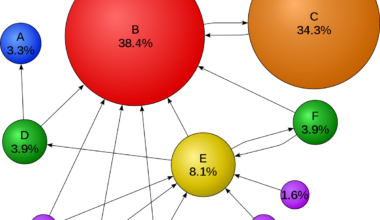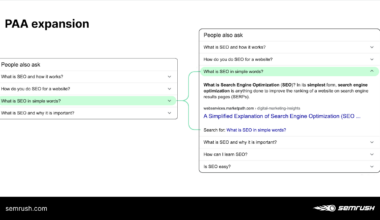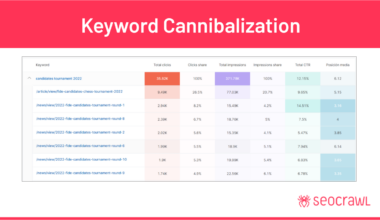Introduction to Google’s BERT Algorithm Update
Google is constantly working to improve its search engine algorithm to provide users with the most relevant and accurate search results. One of the latest updates to the algorithm is the BERT algorithm, which stands for Bidirectional Encoder Representations from Transformers. This update was rolled out in October 2019 and has since impacted how websites are ranked in search results.
The BERT algorithm is designed to better understand the natural language used in search queries. In the past, Google would simply match the keywords in a search query to the keywords on a website to determine relevance. However, this approach often resulted in inaccurate search results that didn’t meet the user’s needs.
With the BERT algorithm, Google now analyzes the entire search query instead of just focusing on keywords. This allows the algorithm to better understand the intent behind the search and provide more accurate results. For example, if a user searches for “how to catch a bullfrog,” the BERT algorithm will understand that the user is looking for instructions on how to catch a bullfrog, rather than just returning results that mention the words “bullfrog” and “catch.”
Overall, the BERT algorithm helps Google better understand the context and meaning behind search queries, which leads to a more accurate and relevant search experience for users. However, this also means that website owners need to adapt their SEO strategies to ensure their content matches the intent behind search queries.
In the following sections, we’ll take a closer look at how the BERT algorithm works, its impact on SEO, and how to adapt to this update.
What is BERT Algorithm?
The BERT algorithm is a deep learning model used by Google to better understand the natural language used in search queries. It uses a pre-training process to analyze large amounts of text data and learn the relationships between words. This allows it to better understand the context and meaning behind search queries, even if they are phrased in a conversational or long-tail format.
BERT stands for Bidirectional Encoder Representations from Transformers, which is a mouthful. Let’s break it down. “Bidirectional” means that the algorithm looks at the entire search query, including words that come before and after a specific word. “Encoder” refers to the process of converting the natural language into a mathematical representation that the algorithm can understand. “Representations” are the mathematical representations of the words, and “Transformers” refer to the attention mechanism used in the pre-training process.
The pre-training process involves feeding the algorithm large amounts of text data, such as books or web pages, and asking it to predict missing words or sentences. This allows the algorithm to learn the relationships between words and the context in which they are used. Once it has been trained, the algorithm can be fine-tuned for specific tasks, such as understanding search queries.
One of the key benefits of the BERT algorithm is that it can better understand conversational search queries. For example, if a user searches for “do I need a visa to travel to the United States,” the BERT algorithm can understand that the user is asking a question and provide relevant results, even if the word “visa” doesn’t appear on the webpage.
Overall, the BERT algorithm is a significant improvement over previous search algorithms because it allows Google to better understand the natural language used in search queries. This leads to more accurate and relevant search results for users, which is ultimately the goal of any search engine.
How BERT Algorithm Works?
The BERT algorithm uses a complex neural network to better understand the natural language used in search queries. Here’s a breakdown of how it works:
1. Tokenization: The search query is broken down into individual words, or tokens, which are then assigned a numerical value. This numerical value represents the word’s position in a pre-defined vocabulary.
2. Embedding: The numerical values are then converted into vectors, or embeddings, using a pre-trained language model. These vectors represent the meaning and context of the words in the search query.
3. Attention Mechanism: The algorithm then uses an attention mechanism to focus on the most relevant words in the search query. This helps the algorithm to better understand the context and meaning of the search query.
4. Bi-Directional: The BERT algorithm is bi-directional, meaning it looks at the entire search query, including words that come before and after a specific word. This helps the algorithm to better understand the relationships between words and the context in which they are used.
5. Fine-Tuning: Once the algorithm has processed the search query, it compares the results to a pre-defined dataset to determine the most relevant results. The algorithm can also be fine-tuned for specific tasks, such as understanding search queries related to a specific topic.
Overall, the BERT algorithm is a significant improvement over previous search algorithms because it can better understand the natural language used in search queries. This leads to more accurate and relevant search results for users, which is ultimately the goal of any search engine.
However, it’s important to note that the BERT algorithm is not perfect. There are still limitations to its understanding of natural language, and it’s possible for the algorithm to make mistakes. Website owners should focus on creating high-quality, relevant content that matches the intent behind search queries, rather than trying to manipulate the algorithm with keyword stuffing or other black hat SEO techniques. By providing valuable content that meets the needs of users, website owners can ensure their content is ranked highly in search results, regardless of algorithm updates.
Impact of BERT Algorithm on SEO
The BERT algorithm has had a significant impact on search engine optimization (SEO) since its release. In the past, website owners would focus on optimizing their content for specific keywords, which often led to low-quality content that didn’t meet the needs of users. With the BERT algorithm, however, Google now understands the intent behind search queries, which means website owners need to focus on creating high-quality, relevant content that matches the intent of the search query.
Here are a few ways the BERT algorithm has impacted SEO:
1. Focus on User Intent: With the BERT algorithm, website owners need to focus on creating content that meets the needs of users, rather than just optimizing for specific keywords. This means researching the intent behind search queries and creating content that provides valuable information related to that intent. For example, if a user searches for “how to catch a bullfrog,” a website that provides step-by-step instructions on how to catch a bullfrog is more likely to rank highly than a website that simply mentions the words “bullfrog” and “catch.”
2. Long-Tail Keywords: The BERT algorithm is better at understanding long-tail keywords, or search queries that are phrased as complete questions or sentences. This means website owners can optimize their content for more specific, niche search queries, which can lead to higher rankings and more targeted traffic.
3. Natural Language: The BERT algorithm is designed to better understand the natural language used in search queries, which means website owners can focus on creating content that is conversational and easy to read. This can lead to higher engagement and a better user experience, which can ultimately lead to higher rankings.
4. Quality Content: With the BERT algorithm, Google is prioritizing high-quality, relevant content that meets the needs of users. This means website owners need to focus on creating valuable, informative content that provides a solution to the user’s search query. Websites that provide low-quality, irrelevant content are more likely to be penalized by the algorithm.
Overall, the BERT algorithm has shifted the focus of SEO from keyword optimization to creating high-quality, relevant content that meets the needs of users. By focusing on user intent, long-tail keywords, natural language, and quality content, website owners can adapt to the BERT algorithm and ensure their content is ranked highly in search results.
In conclusion, the BERT algorithm is a significant improvement over previous search algorithms because it allows Google to better understand the natural language used in search queries. This leads to more accurate and relevant search results for users, which is ultimately the goal of any search engine. By adapting to the BERT algorithm and focusing on
Adapting to BERT Algorithm Update
Adapting to the BERT algorithm update is essential for website owners who want to maintain or improve their search engine rankings. Here are some tips for adapting to the BERT algorithm update:
1. Focus on User Intent: As mentioned earlier, the BERT algorithm is designed to understand the intent behind search queries. Therefore, website owners need to focus on creating content that meets the needs of users. This means researching the intent behind search queries and creating content that provides valuable information related to that intent.
2. Long-Tail Keywords: The BERT algorithm is better at understanding long-tail keywords, which means website owners should optimize their content for specific, niche search queries. This can lead to higher rankings and more targeted traffic. However, it’s important to remember that long-tail keywords should be used naturally in the content and not forced.
3. Natural Language: The BERT algorithm is designed to understand natural language, which means website owners should create content that is conversational and easy to read. This can lead to higher engagement and a better user experience.
4. Quality Content: With the BERT algorithm, Google is prioritizing high-quality, relevant content that meets the needs of users. Therefore, website owners need to focus on creating valuable, informative content that provides a solution to the user’s search query. Websites that provide low-quality, irrelevant content are more likely to be penalized by the algorithm.
5. Monitor Analytics: It’s essential to monitor website analytics to see how the BERT algorithm update has affected website rankings and traffic. This can help website owners identify areas for improvement and adjust their SEO strategies accordingly.
6. Update Existing Content: Website owners should update existing content to ensure it aligns with the BERT algorithm update. This may involve re-writing content to be more conversational or adding more detail to meet the user’s needs.
7. Use Structured Data: Structured data can help the BERT algorithm better understand the content on a website. Website owners should use structured data to provide more information about their content, such as product reviews, ratings, and pricing.
Adapting to the BERT algorithm update requires website owners to focus on creating high-quality, valuable content that meets the needs of users. By doing so, website owners can improve their search engine rankings and provide a better user experience.
Final Thought
The BERT algorithm update has brought significant changes to the world of SEO, but it’s important to remember that the ultimate goal is to provide the best possible user experience. By focusing on user intent, creating high-quality content, and using natural language, website owners can ensure that their content is well-optimized for search engines and meets the needs of their target audience.
While adapting to the BERT algorithm update may seem daunting, it’s important to remember that the fundamentals of SEO remain the same. By creating valuable content, using relevant keywords, and providing a good user experience, website owners can continue to improve their search engine rankings and drive targeted traffic to their website.
It’s also important to keep up with future updates to the Google algorithm and adapt accordingly. SEO is a constantly evolving field, and website owners need to stay up-to-date with the latest trends and best practices in order to remain competitive.
In conclusion, the BERT algorithm update has improved the accuracy and relevance of search results for users, and website owners need to adapt their SEO strategies to meet this new standard. By focusing on user intent, creating high-quality content, and providing a good user experience, website owners can continue to improve their search engine rankings and drive targeted traffic to their website.






















